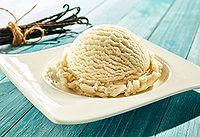What’s Hiding in Your Ice?

It’s amazing how few Americans realize how dirty the insides of ice machines are. They just assume that the ice in their beverages is clean and safe. The hidden truth is that the insides of most ice machines contain mold—especially the commercial ones in restaurants that are more susceptible to contamination. Many Americans would move out of their homes if they found out there was mold in them, but they have no problem drinking beverages with ice from a potentially contaminated ice machine.
Who is responsible for keeping Americans safe from mold and foodborne pathogens in these cases? Is it even possible to stop the continual food outbreaks we hear about on the news? And who is to blame for dirty ice machines? Is it service technicians, health inspectors, policymakers, ice machine manufacturers or restaurant employees?
It’s difficult to pin this on the health inspectors since they are not legally responsible for looking inside every ice machine. These local agencies are overwhelmed by the sheer number of inspections they need to carry out and are almost always underfunded. On a national level, the federal Food Safety Modernization Act is full of loopholes and doesn’t seem to have stopped foodborne illnesses from breaking out all across the country. According the U.S. Centers for Disease Control and Prevention, more than 9 million Americans are affected by foodborne pathogens each year, requiring more than 125,000 hospitalizations.
Should Americans be wary of commercial ice machine manufacturers? Are they doing the best they can to ensure clean ice? They do provide cleaning and sanitizing instructions for their machines, but unfortunately for thirsty Americans, those recommendations are insufficient for removing all of the mold, biofilm and other buildup that grows in commercial ice machines.
Most restaurants follow local and state regulations and schedule regular cleanings with HVAC technicians. Unfortunately, 95 percent of HVAC service technicians’ lack food safety training and the knowledge to properly clean and sanitize commercial ice machines. And somehow, 99 percent of food industry professionals have never viewed inside the mechanicals of a commercial icemaker. Ultimately, restaurants are relying on untrained technicians using faulty instructions and following poorly written regulations. The result of this disastrous combination should be brutally obvious, especially in schools and healthcare settings.
Joe Lillis has been in the ice business for more than 30 years and his mission is to give restaurants and healthcare facilities the confidence that they are serving 100 percent pure, clean ice. “I’ve stuck my head inside hundreds of machines, and what I’ve seen is not pretty,” he says. “At least 90 percent of all commercial ice machines are not properly cleaned and sanitized and would absolutely fail a proper U.S. Food and Drug Administration inspection. It’s a real problem.”
Unknown to virtually everyone except the technicians who quietly service them, commercial ice machines are a significant ongoing source of mold and biofilm in foodservice settings. The water may be clean and pure when it goes into the machines, but the tubes and inner workings of the machines can be harboring bacteria and other foodborne pathogens, potentially contaminating the ice cubes that end up in customers’ drinks.
The average American consumes nearly two pounds of ice per day. If they could see the insides of ice machines, that number might plummet. For most people, out of sight still equates to out of mind and unfortunately that includes those in the foodservice industry.
“People have zero-tolerance for mold in their homes, ” Lillis says, “but there has been mold or biofilm in almost every ice machine I’ve ever looked inside.”
The 46-year-old Bostonian knows what he’s talking about. He developed the nation’s first cleaning, sanitation and verification program that results in a truly clean, sanitary machine. According to Lillis, after undergoing a manufacturer’s recommended cleaning procedure, 80 percent of ice machines still contain measurable quantities of mold, biofilm or other biological buildup. “The cleaning process as described by most ice machine manufacturers is really just a descaling procedure that is intended to remove mineral buildup on the heat exchanger.”
The average HVAC or refrigeration technician will claim it takes approximately 2 hours to clean an ice machine. Lillis estimates that it actually takes between 4 and 8 hours to properly clean and sanitize an ice machine and bin. Lillis constantly battles with service technicians on this matter. “Quite often, I have to swab the ice machine in front of them after their 2-hour descaling procedure to prove that the ice maker isn’t clean yet.”
“Most restaurants also forget that the ice bins and dispensers need to be emptied, cleaned, and sanitized much more frequently than they are,” Lillis says. “And don’t even get me started on people who reach in and grab ice with their bare hands.”
Joe Lillis is the founder of IceLogix.
Looking for a reprint of this article?
From high-res PDFs to custom plaques, order your copy today!





